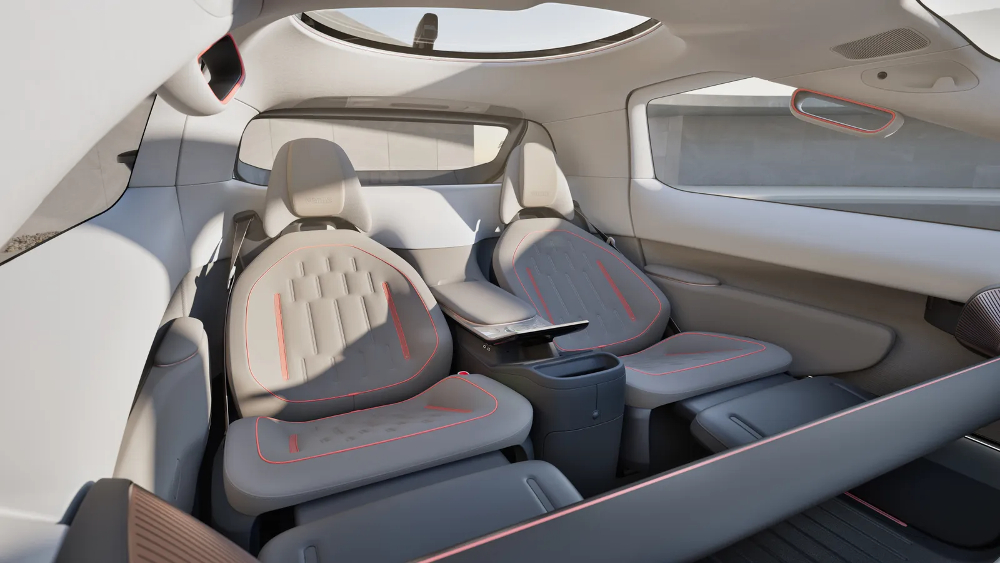Sign up for daily news updates from CleanTechnica on email. Or follow us on Google News!
Robotaxis sure are in the news a lot lately. Just today, Zachary Shahan wrote about what Emil Michael, the former Chief Business Officer at Uber, said about the robotaxi business, “It’s always around the corner, but it takes more time than people think, because of regulation, the cost of the vehicles that do it well, and also just the density of enough driverless cars in any city to have a ride take 10 minutes or less to get to your door when you order one. And these things are expensive. The Waymo cost of that whole vehicle, with all the spinning things you see on top of the car, is about $300,000. That’s not going to replace a driver financially anytime soon.”
Earlier in the day, Zachary wrote about Waymo opening up its robotaxi business in San Francisco to the general public, not just those who have expressed an interest in using the service. Note that Waymo completely opened its service to riders in Phoenix back in 2020. Zachary pointed out, “It’s hard to make any assumptions about what this San Francisco news means. And when can Waymo do something similar in New York City, Chicago, Philadelphia, Los Angeles, Miami, Tampa, etc? We’ll see … hopefully.” And of course the whole world is on tenterhooks waiting for Tesla to make its big announcement about its own robotaxi plans on August 8.
A Robotaxi From Rimac

While the world is focused on Waymo and Tesla in America, a continent away in Croatia, Rimac this week has taken the wraps off its own robotaxi concept. It is called Verne, in honor of the famous futurist and author Jules Verne. The company says the new service and its ecosystem are based on three key elements — including the autonomous vehicle itself, which is of course powered purely by electricity. The other pillars of Verne besides the vehicle itself are an app and a special infrastructure.
“We want to make a difference with our holistic integrated approach which is designed around the best possible experience,” says co-founder Mate Rimac. “The end result would be the best possible mobility experience for everyone. This means that every customer will have a better service than the best mobility service enjoyed by the very rich, though the service will be affordable for all. You will have a safe and reliable driver, a vehicle with more interior space and comfort than the best limousines today, and a service that will be tailored to your needs in every possible way.”
Previous announcements of the development of a robotaxi service have mostly featured minibus-like people movers. Rimac, on the other hand, is focusing on a futuristic compact three-door vehicle suitable for one or two passengers.

Rimac has developed its own platform, which is designed exclusively for autonomous driving. The company says it is “free from the compromises and disadvantages” that are necessary when “using a legacy platform built for human driving.” For the autonomous driving systems, the company relies on technology from Mobileye. Three lidar sensors are installed for long-distance detection, six more for short distances, and there are also a total of 13 cameras. The Mobileye software calculates the route from the data collected from all those sensors, which enables it to operate safely in any weather and at any time of day, Rimac claims.
In terms of drive technology, the Verne vehicle does not set any new standards like the ultra-fast and ultra-expensive Rimac Nevera. A vehicle that will be suitable for robotaxi service should be as inexpensive to produce and operate as possible The electric motor for the Verne robotaxi has an output of around 150 kW. The vehicle itself is fitted with a 60 kWh LFP battery. Rimac claims a range of 240 kilometers (125 miles), which should be sufficient for the planned robotaxi use in cities. Larger, more expensive batteries are therefore unnecessary.
Introducing The Mothership

In addition, there is also Verne’s infrastructure concept. A central hub called a “mothership” is also planned. This is where each vehicle will travel at least once a day to charge the battery and be cleaned. As the Verne has been developed as a completely new vehicle, it is not just a converted minibus, Rimac wants to be able to replace upholstery and consoles in the passenger area in just a few minutes so that damaged or dirty pieces are removed before the next customer climbs aboard. Inside, there is a large, central touchscreen and nothing else. Even for the initial phase, there is no human backup driver to take over in the event the autonomous driving system fails, so the Verne has no pedals or steering wheel.
The vehicle and “mothership” are combined with the Mobility Service Platform, which customers can access via the Verne app. The robotaxi can not only be ordered via the app but also customized in advance. Comfort settings, the color of the ambient lighting, the interior temperature, and even special smells can be programmed into the interior of the vehicle in advance. “Even though the customer will never own the vehicle, it will be tailored to feel like your own,” said Rimac.
Verne is set to launch in 2026, initially in Zagreb, then in the UK and Germany, then service will be expanded to other European cities and eventually to the Middle East. Rimac plans to build the all-electric Verne robotaxi in a new plant in Zagreb. The program will not be managed by Mate Rimac himself, but by Marko Pejkovic. Together with Mate Rimac and Nevera designer Adriano Mudri (now Chief Design Officer at Verne), Pejkovic has developed the vision behind the robotaxi service.
The Takeaway
There is some seriously creative thinking going into the Verne robotaxi plan. The vehicle itself looks like nothing else on the road (although it does somewhat resemble a Mazda 2 from the rear). It is largely free of the bulbous excrescences for the lidars and other autonomous driving sensors that festoon robotaxis from Waymo, Cruze, Zoox, and others. Those features of the Verne robotaxi are nicely integrated into the bodywork of the vehicle so that it doesn’t look like it escaped from the set of Lost In Space.
Of course, many other companies have tried their hand at the robotaxi game and have been humbled by the challenge. But Mate Rimac has a way of finishing what he starts. The Verne just may move the needle on robotaxis in a few years time.
Have a tip for CleanTechnica? Want to advertise? Want to suggest a guest for our CleanTech Talk podcast? Contact us here.
Latest CleanTechnica.TV Videos
CleanTechnica uses affiliate links. See our policy here.





